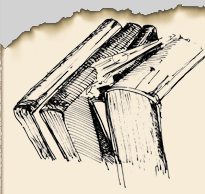


|
Heinrich von Staden, a German adventurer, was a man from Ivan the Terrible court (1564-1576). His notes are the first mentions of calculations in Russia: “They calculate with the help of cherry and plum stones”. It means that stones were used as jetons. Adam Olearius (his book was published in 1647) writes: “Russian counting men carry plum stones in special small bags”. He also says that the Russians have “a special calculation method” (“auf ihre Manier”). Jacob Reitenfels (lived in Moscow in 1671-1672) was the first man who mentioned about stchoty. He wrote: “The Russians calculate with the help of small stones strung on a wire”. Johann Korb also wrote about Russian stchoty in 1699: “They look like a board divided into many rows of grains, and their rate of calculation is wondering”. Captain John Perry (lived in Russia in 1698-1712) wrote: “It was a special device with stones strung on a wire, placed in a small frame…”. Peter van Haven, a Danish, lived in Russia in 1736-1739, published a 55-pages treatise about Russian stchoty. He writes: “All Russians even the poorest peasants are skilled in art of calculations”. Van Haven has described the construction of stchoty and calculation methods in detail and given them a high appraisal.
However, Voltaire spoke about stchoty in a slighting tone in his manuscript about Peter the Great. He said that stchoty is a remnant of barbarism and even a symbol of Russian backwardness. Voltaire was sure that stchoty got out of use after Peter the Great reforms. But not all French shared Voltaire's opinion. The famous writer m-me de Stael admired Russian coachmen ("yamschik") who calculated smartly with the help of stchoty. The Russians also didn't support Voltaire. In 1815 the Russian writer Pavel Svinyin wrote that stchoty will be used to the end of time! He added: “No foreign book-keeper can compete with the Russian one”. I. Burakov wrote in 1861: “There is no house in Russia where there are no stchoty. Some people live without books in Russia, but nobody can't do without stchoty”. He supposed that sooner or later stchoty would replace all known arithmetical machines. And even 40 years later another inventor A. Talalay wrote: “No calculation machines, slide rules and so on… will replace stchoty”. A book-keeper A. Abakumov (1873) confirmed that nobody can solve any arithmetic problem in a sheet of paper faster than he did with stchoty. A teacher A. Pavlov (1901) considered: “Stchoty is a most powerful aid for intellectual calculations”. Another teacher S. Zorin (1907) thought that “stchoty is not only an important factor in the art of fast calculation, but also the most important instrument of pedagogics”. |



